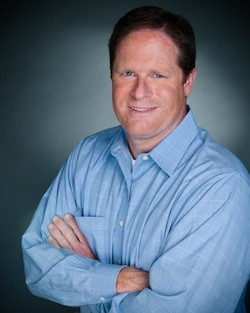Odd lot trades, once the staple of retail traders, are now more likely to come from high-frequency traders, with implications for trading performance and price discovery.
Internalization, the practice by which market making firms such as Citadel, Knight, and UBS match order flow against their own books or via broker crossing networks, has drained the traditional odd lot flow from exchanges, to be replaced by odd lot trades generated by high-speed trading applications.
“Historically, every institution has wanted to interact with what they consider to be uninformed retail order flow, but that’s no longer available because wholesalers have taken all the marketable retail flow before it hits the exchange,” said Paul Daley, head of product development at SunGard’s Fox River Execution Solutions. “Yet the number of odd lot trades is moving higher.”

Paul Daley, head of product development, SunGard’s Fox River Execution Solutions
So who’s doing them, if not uninformed traders? The answer: Informed traders.
“Typically, odd lots are being generated by high-frequency traders,” Daley said. “Another trend we’ve noticed is that different venues have higher odd lot fill rates than others, which suggests there is something different about these venues or their participants.”
With most retail odd lot orders being consumed by large market makers, there are concerns among buy side traders that odd lot fills are coming from high-frequency traders, which affects how they interact with such orders.
“In this environment, buy-side traders are likely skeptical about the toxicity of all order sizes, odd lots included,” said Michael Earlywine, head trader, Americas, at Ecofin, a $1.2 billion investment management firm headquartered in London.
Ecofin specializes in public and private investments in the worldwide utility, infrastructure, energy and alternative energy sectors. Its funds include hedge funds, long-only funds, private equity and debt funds, and bespoke institutional mandates.
Although the firm doesn’t engage in high-speed algorithmic trading, it does trade instruments that are part of other firms’ high-speed trading strategies, which means it needs to understand the inner workings of automated trading.
“One way to reduce the potential for toxicity and information leakage is to maintain minimum fill rates on all orders,” Earlywine said. “Visible odd lot orders could also be automatically aggregated into more meaningful liquidity.”
Another way for interaction is through education. “Buy-side traders have a responsibility to understand the complexities of today’s environment; without that education, it would be hard for a firm to claim their best execution process is effective,” Earlywine said.
Academic studies have shown that odd lot orders are being generated for informational purposes.
“Traders (or algorithms) appear to be splitting trades into odd lot pieces, motivated perhaps by such trades’ absence from the consolidated tape,” said Maureen O’Hara, professor at the Cornell University Graduate School of Management, in a 2011 research study. “We also find that odd lots trades are more likely to be from high frequency traders, evidence suggestive of the new patterns of trading in the market.”
The analysis conducted by O’Hara provides a number of interesting results.
The fact that odd lot orders are not reported to the consolidated tape is a large and significant problem for stocks with higher prices, lower liquidity, higher levels of information asymmetry, and when the volatility is low.
Fully 34% of all trades in Google, for example, are missing from TAQ (Trade and Quote) data, according to O’Hara. Almost 24% of trades in small stocks and 18% of trades in large stocks are odd lots, resulting in a substantial missing trade bias in TAQ.
Strong evidence exists that these odd lot trades have large information content. “Odd lot trades now contribute 30 % of price discovery, suggesting that odd lots are no longer simply the milieu of small, retail traders.” O’Hara said. “We also find that round lot trades of 100 shares contribute approximately another 50 %. That 80% of price discovery on Nasdaq is coming from trades of 100 shares or less is consistent with informed traders splitting orders into odd lots and small trade sizes.”
Whereas in the past, uninformed traders would provide liquidity through odd lots and informed traders would take liquidity, the situation has now reversed, with informed traders providing most of the liquidity.
“We are seeing more odd lots being generated by providers of liquidity and fewer being generated by takers,” said Daley. “The providers are informed traders trying to get more information one lot at a time. There is much more information in odd lots than there ever was.”
The implications for traders are clear. “You need to forego the notion that odd lots are being generated by retail traders, and instead recognize that their purpose is to gain information,” Daley said. “People need to think about whether they want to interact with odd lot orders.”
SunGard’s Fox River Execution Solutions provides agency-only services that help improve execution quality, minimize information leakage and decrease overall execution costs.
“Our algorithmic execution platform interacts with odd lot transactions by both by venue and order type,” said Daley. “It distinguishes between ‘good’ and ‘bad’ fills, and then optimizes executions based on that information.”






